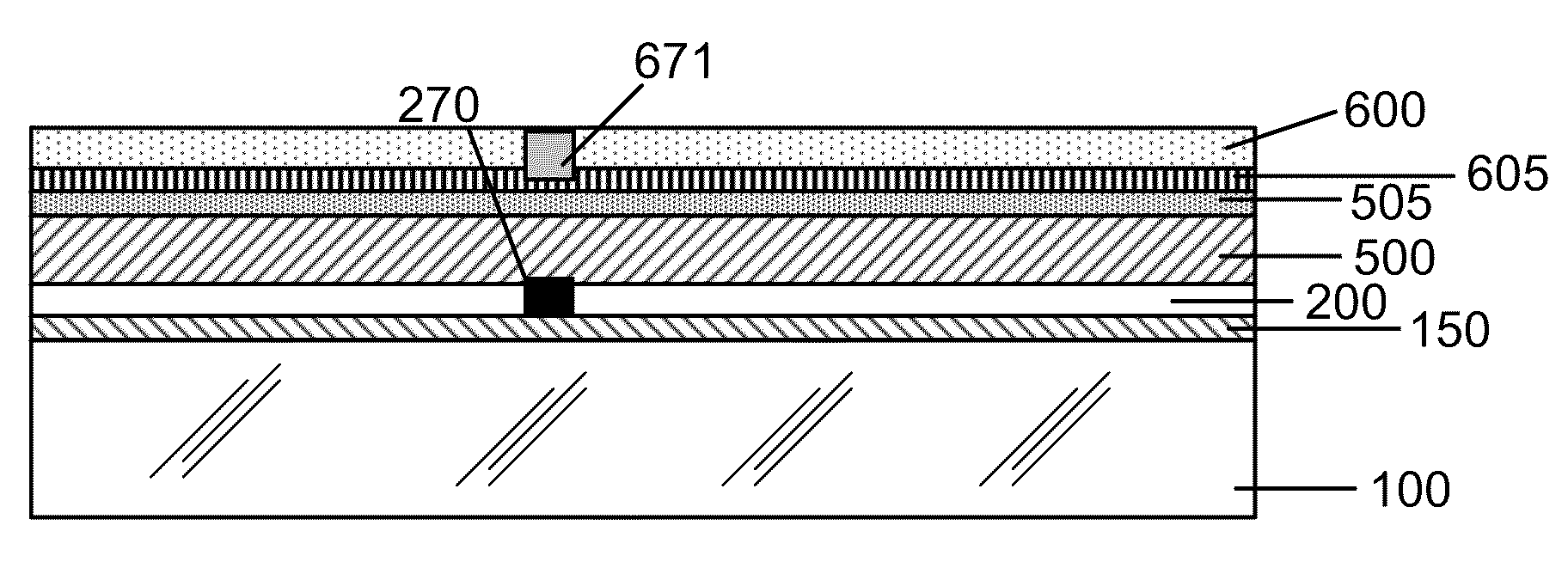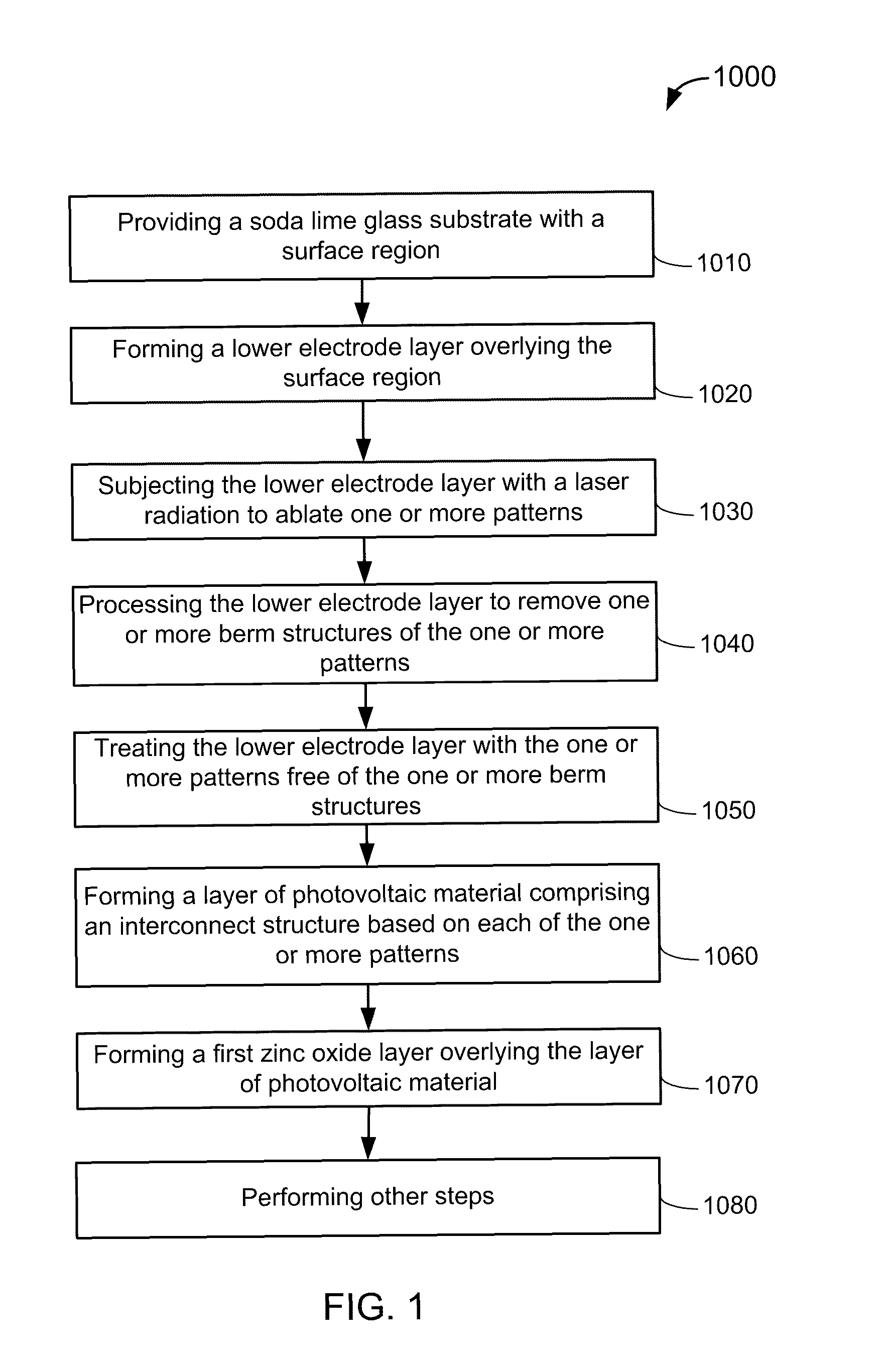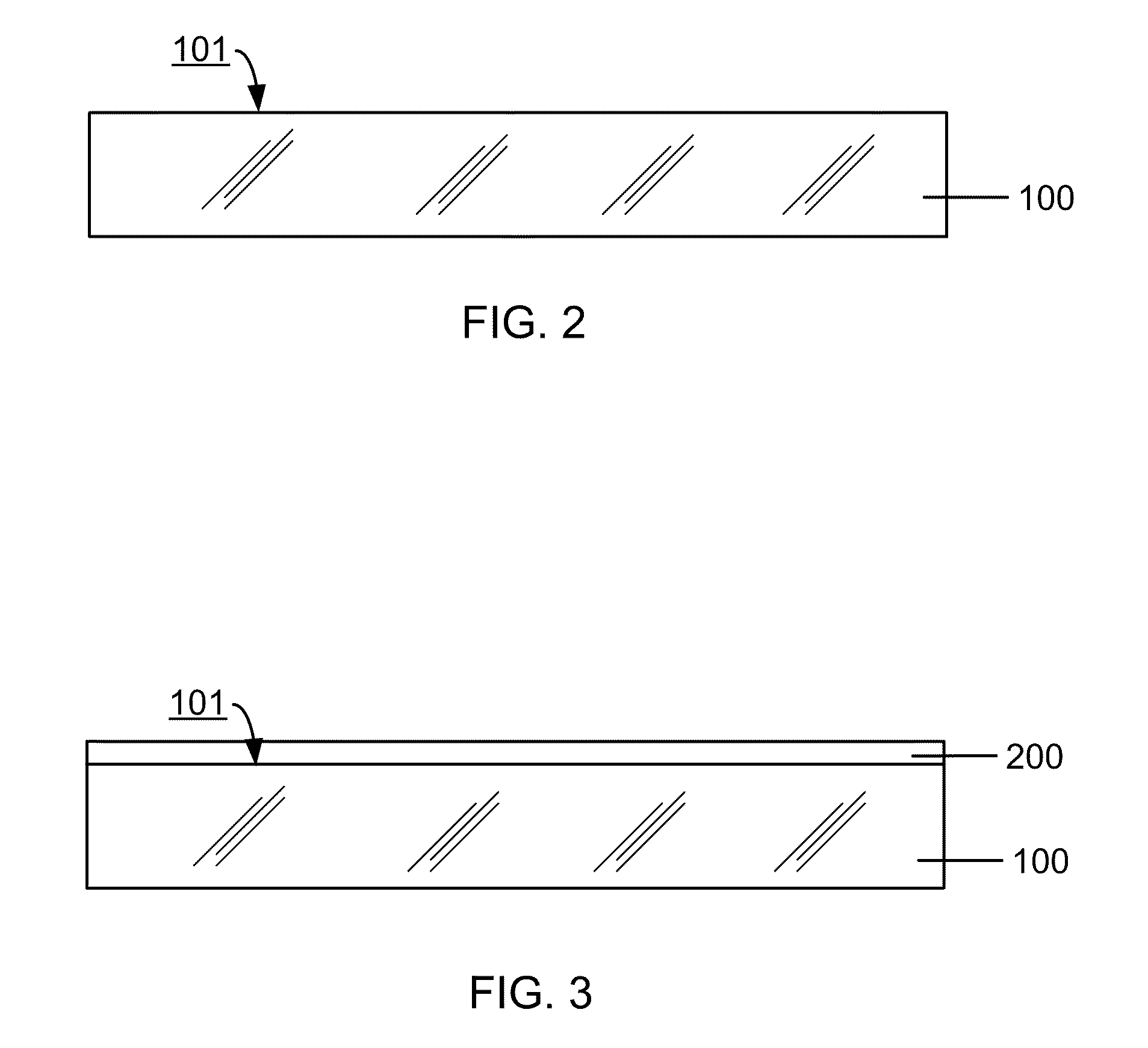Patterning electrode materials free from berm structures for thin film photovoltaic cells
a photovoltaic cell and electrode material technology, applied in the direction of semiconductor devices, electrical devices, solid-state devices, etc., can solve the problems of petrochemical fuel supply limitation, rapid becoming a scarce resource, and depletion of resources
- Summary
- Abstract
- Description
- Claims
- Application Information
AI Technical Summary
Benefits of technology
Problems solved by technology
Method used
Image
Examples
Embodiment Construction
The present invention relates generally to photovoltaic materials and manufacturing method. More particularly, the present invention provides a method and structure for fabricating thin film solar cells. Merely by way of example, the present method includes patterning electrode material formed on a soda lime glass substrate using electromagnetic radiations and processing the electrode material free from berm structures for manufacture of thin film photovoltaic cells, but it would be recognized that the invention may have other configurations.
FIG. 1 is a simplified flowchart illustrating a method of fabricating a thin film photovoltaic cell according to an embodiment of the present invention. This diagram is merely an example, which should not unduly limit the scope of the claims herein. The method 1000 includes the following processes:1. Process 1010 for providing a soda lime glass substrate with a surface region;2. Process 1020 for forming a lower electrode layer overlying the surf...
PUM
| Property | Measurement | Unit |
|---|---|---|
| thickness | aaaaa | aaaaa |
| width | aaaaa | aaaaa |
| width | aaaaa | aaaaa |
Abstract
Description
Claims
Application Information
 Login to View More
Login to View More - R&D
- Intellectual Property
- Life Sciences
- Materials
- Tech Scout
- Unparalleled Data Quality
- Higher Quality Content
- 60% Fewer Hallucinations
Browse by: Latest US Patents, China's latest patents, Technical Efficacy Thesaurus, Application Domain, Technology Topic, Popular Technical Reports.
© 2025 PatSnap. All rights reserved.Legal|Privacy policy|Modern Slavery Act Transparency Statement|Sitemap|About US| Contact US: help@patsnap.com



